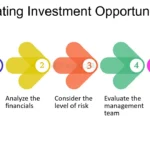Cybersecurity Essentials: Protecting Your Data in an Increasingly Digital World
In today’s hyper-connected landscape, where digital interactions dominate every aspect of life, cybersecurity has become a paramount concern for individuals and organizations alike. With the surge in data breaches, cyberattacks, and identity theft, safeguarding sensitive information has never been more critical. Understanding the essentials of cybersecurity is vital for protecting personal data and maintaining the integrity of businesses.
The Cyber Threat Landscape
The rise of the digital era has introduced a myriad of cyber threats. From ransomware attacks that lock organizations out of their systems until a ransom is paid to phishing scams that trick individuals into revealing personal information, the range of potential dangers is vast. According to recent studies, cybercrime is projected to cost the global economy trillions of dollars annually. As technology continues to advance, so do the tactics employed by cybercriminals, making it essential to stay informed and proactive.
Key Principles of Cybersecurity
- Understanding Risks: The first step in effective cybersecurity is identifying the specific risks associated with your data and systems. This involves assessing what data is most valuable, who might target it, and how they might attempt to breach your defenses. Conducting a thorough risk assessment can help prioritize security measures.
- Implementing Strong Password Policies: Weak passwords are a common vulnerability that cybercriminals exploit. Organizations should enforce robust password policies that require complex passwords and regular updates. Users should also be educated about the importance of not using the same password across multiple platforms.
- Two-Factor Authentication (2FA): Implementing 2FA adds an extra layer of security. Even if a password is compromised, the additional requirement of a secondary verification method—such as a text message code or authentication app—can significantly reduce the risk of unauthorized access.
- Regular Software Updates: Software vendors frequently release updates to patch security vulnerabilities. Regularly updating operating systems, applications, and antivirus programs ensures that systems are equipped to defend against the latest threats.
- Data Encryption: Encrypting sensitive data transforms it into a coded format that can only be read by those with the appropriate decryption key. This means that even if data is intercepted or accessed unlawfully, it remains unreadable and secure.
- Employee Training and Awareness: Humans are often the weakest link in cybersecurity. Regular training sessions that educate employees about phishing scams, social engineering tactics, and safe browsing practices can empower them to act as the first line of defense against cyber threats.
Establishing an Incident Response Plan
Despite best efforts, breaches can still occur. Having an incident response plan is crucial for minimizing damage. This plan should outline roles and responsibilities, communication strategies, and recovery procedures. By preparing for potential incidents, organizations can react swiftly and effectively, mitigating the impact of a breach.
The Future of Cybersecurity
As technology continues to evolve, so too will the strategies and tools used in cybersecurity. Emerging technologies like artificial intelligence (AI) and machine learning are being increasingly employed to detect and respond to threats in real-time. Additionally, with the growth of the Internet of Things (IoT), new vulnerabilities are emerging, necessitating a more comprehensive approach to security.
Conclusion
In an increasingly digital world, the importance of cybersecurity cannot be overstated. Protecting data is not only a technical challenge but also a strategic imperative for individuals and organizations. By understanding the essential principles of cybersecurity, implementing proactive measures, and fostering a culture of security awareness, we can better safeguard our data against the ever-evolving landscape of cyber threats. The journey toward robust cybersecurity is ongoing, requiring vigilance, education, and adaptability to navigate the challenges ahead.


